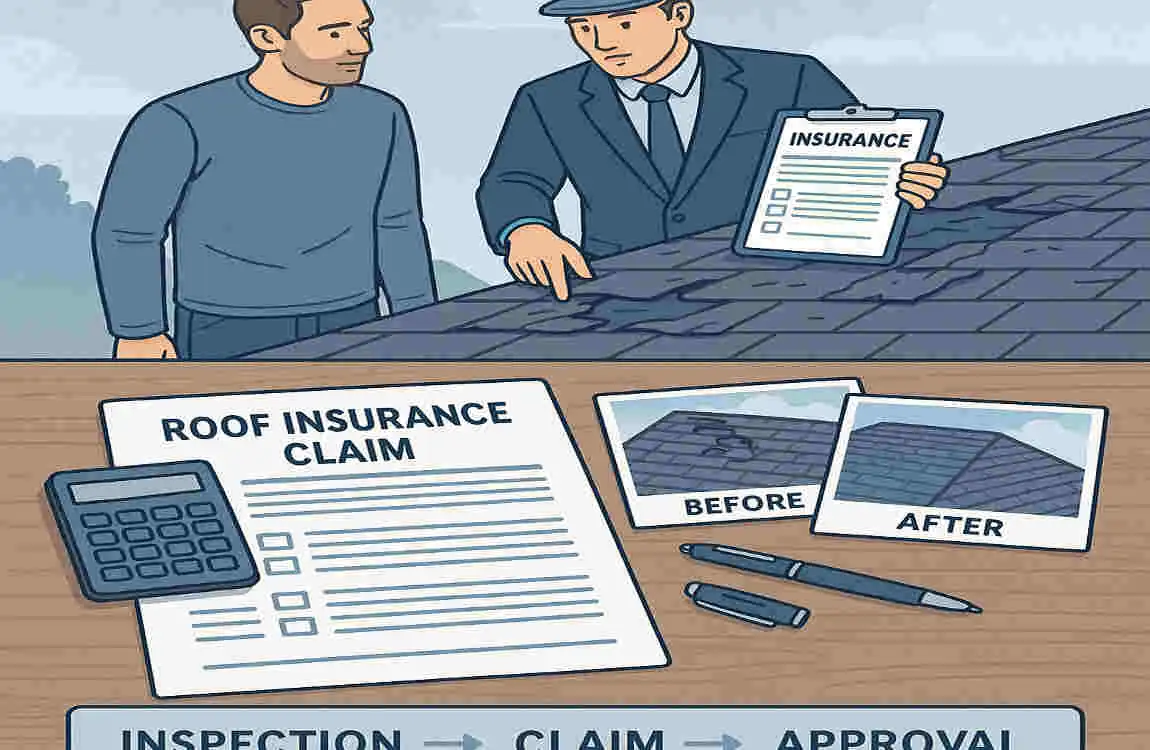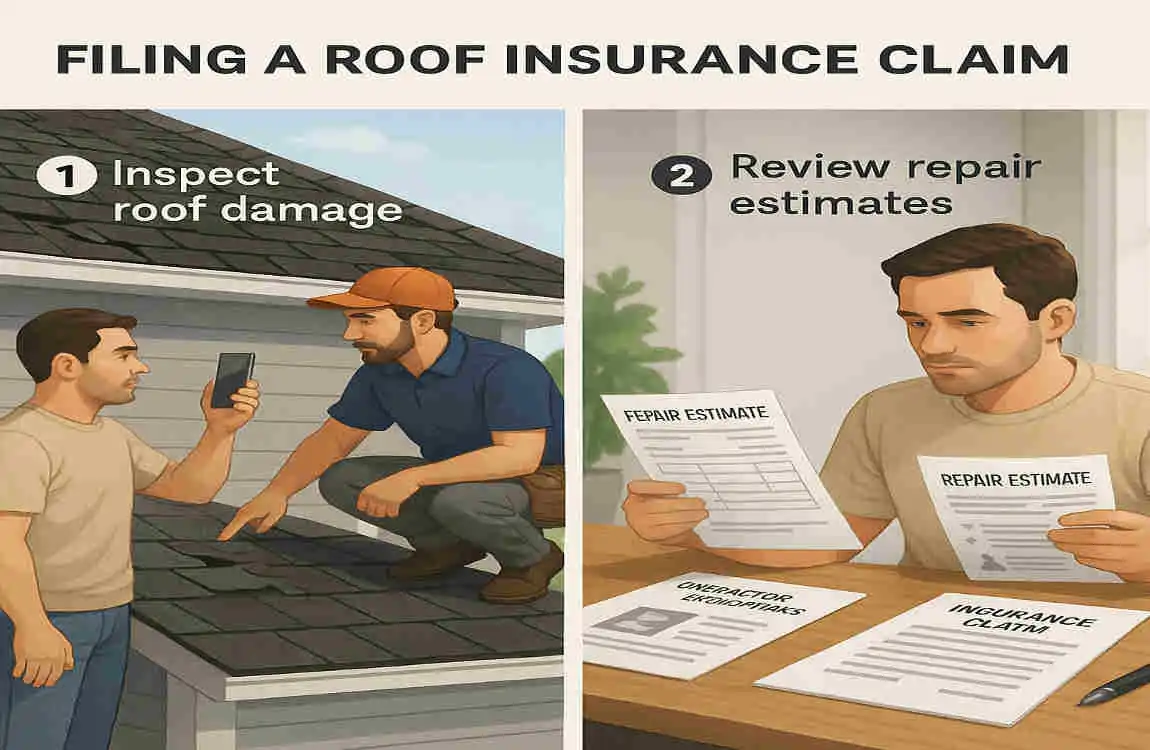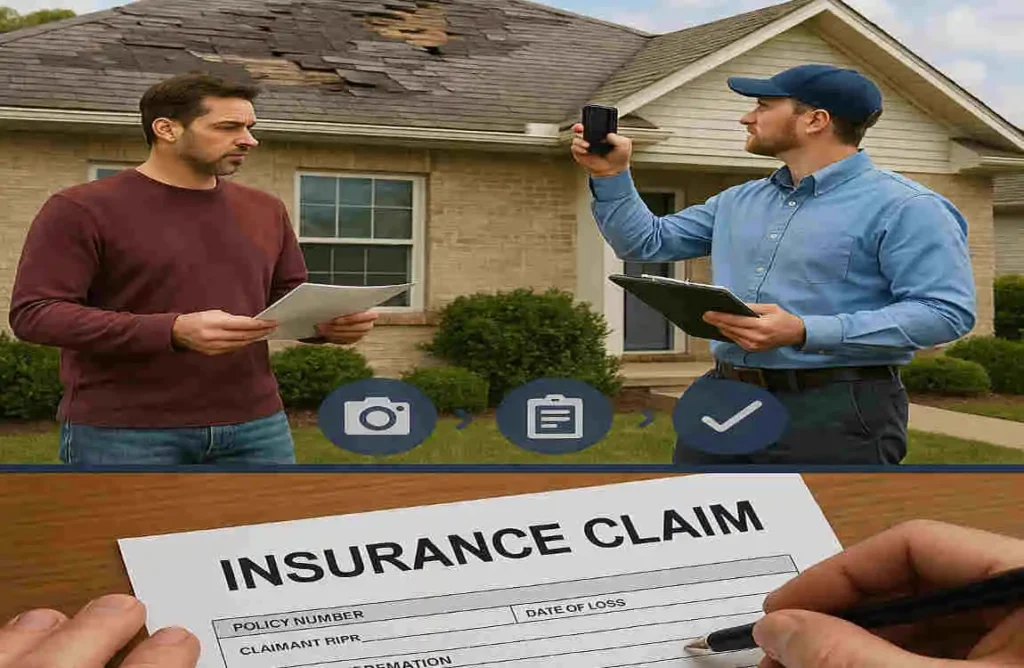Your home is one of your most significant investments, and your roof plays a critical role in protecting it. Over time, however, your roof can face damage from storms, hail, or other unforeseen events. This is when having roof insurance becomes invaluable. But do you know how to file a roof insurance claim to ensure your repairs are covered?
Understanding Roof Insurance

To successfully navigate the claims process, it’s essential to understand what roof insurance is, what it covers, and how it works. Let’s break it down.
What Is Roof Insurance?
Roof insurance is typically included within your homeowner’s insurance policy. It provides coverage for roof repairs or replacements caused by specific types of damage, such as:
- Storms (e.g., high winds, heavy rain)
- Hail damage
- Fire
- Other unforeseen external factors
However, it’s important to note that wear and tear from aging is often excluded. Roof insurance won’t cover gradual deterioration, so keeping your roof in good condition is critical.
Types of Roof Damage Covered
Here are the most common types of roof damage that insurance policies typically cover:
- Storm damage: High winds can rip shingles off a roof, while heavy rain or debris can cause leaks or structural damage.
- Hail damage: Hailstones can dent or crack shingles, leading to long-term issues if not repaired.
- Fire damage: Fires can destroy entire sections of a roof, requiring extensive repairs or replacement.
Common Misconceptions About Roof Insurance
Many homeowners assume that all roof damage is covered by insurance, but this isn’t always the case. Some common misconceptions include:
- Assuming older roofs are fully covered (some policies prorate based on the roof’s age).
- Believing wear and tear is included—it’s not.
- Thinking you don’t need documentation for claims. (Spoiler: You do!)
Homeowner’s Insurance vs. Roof-Specific Policies
While most homeowners rely on a standard homeowner’s insurance policy, you may also have the option of purchasing roof-specific insurance. These policies focus solely on roof-related risks and may offer better coverage for events like hail or storm damage.
Assessing Roof Damage
The first step in filing a roof insurance claim is assessing the damage. This ensures you have a clear idea of what happened and what needs to be repaired.
How to Safely Inspect Your Roof
After a damaging event, such as a severe storm, you might be tempted to inspect your roof yourself. However, safety should always come first. Here’s how to stay safe:
- Use binoculars to examine your roof from the ground.
- Look for apparent damage, such as missing shingles, dents, or debris.
- Avoid climbing onto the roof unless you have proper safety equipment.
When to Call a Professional Roofer
If the damage isn’t visible from the ground or you’re unsure about the extent, it’s best to bring in a professional roofing contractor. They have the tools and expertise to assess your roof safely and thoroughly.
Documenting Damages
Proper documentation is critical for your insurance claim. Follow these steps:
- Take photos: Capture clear images of all visible damage, including missing shingles, holes, and leaks.
- Write notes: Record the date, time, and cause of the damage (e.g., “Hailstorm on 10 October 2025”).
- Collect supporting evidence: Keep weather reports or news articles about the event that caused the damage.
Thorough documentation helps strengthen your claim and ensures it’s processed smoothly.
Reviewing Your Insurance Policy
Before filing a claim, review your insurance policy to understand your coverage. This helps avoid surprises during the claims process.
Key Terms to Understand
Here are some important terms to familiarize yourself with:
- Coverage limits: The maximum amount your insurer will pay for roof repairs or replacement.
- Deductibles: The amount you must pay out of pocket before your insurance kicks in.
- Exclusions: Specific situations or types of damage that your policy doesn’t cover.
Understanding Deadlines
Most insurance policies have strict timeframes for filing claims. Review your policy to know exactly how long you have after damage occurs to submit a claim.
Filing the Roof Insurance Claim
Now that you’ve assessed the damage and reviewed your policy, it’s time to file your claim. Here’s how to do it step by step.
How to File a Roof Insurance Claim
- Contact your insurance provider. You can typically file claims by phone, through an online portal, or via a mobile app.
- Provide necessary documentation. This includes photos, inspection reports, and any other evidence of damage.
- Complete claim forms. Your insurer will guide you through the paperwork required to process your claim.
Tips for Effective Communication
- Be clear and concise when describing the damage.
- Keep records of all interactions with your insurer, including phone calls and emails.
- Follow up regularly to check on the status of your claim.
Working with the Insurance Adjuster
Once your claim is filed, an insurance adjuster will visit your home to assess the damage.
What to Expect During the Inspection
The adjuster will examine your roof, take photos, and estimate the cost of repairs. This inspection determines how much your insurance company will pay.
How to Prepare
- Provide the adjuster with your documentation (photos, notes, and your roofer’s reports).
- Be present during the inspection to answer questions and point out damage.
If You Disagree with the Findings
If the adjuster’s estimate is too low or they deny your claim, you have the right to challenge their decision. Request a second inspection or hire a public adjuster to advocate on your behalf.
Getting Repair Estimates and Choosing a Contractor

Once the adjuster approves your claim, it’s time to find a contractor to complete the repairs.
Why You Need Multiple Estimates
Getting at least two to three estimates ensures you’re getting a fair price and helps you identify any overcharging or underestimating.
Finding a Reputable Contractor
Look for contractors who:
- Are licensed and insured
- Have positive reviews and references
- Provide detailed, written estimates
Red Flags to Avoid
- Contractors who demand full payment up front
- Offers that seem too good to be true
- Lack of licensing or proof of insurance
Understanding the Claim Settlement
Once your claim is processed, you’ll receive a settlement offer. Here’s what you need to know.
Types of Settlements
- Actual cash value (ACV): This considers depreciation and pays the current value of your roof.
- Replacement cost value (RCV): This equals the full cost to repair or replace your roof.
Negotiating Your Settlement
If the settlement offer seems unfair, you can negotiate by:
- Providing additional evidence (e.g., contractor estimates)
- Highlighting discrepancies in the adjuster’s report
- Seeking help from a public adjuster, if necessary
Completing Roof Repairs
With your settlement in hand, it’s time to repair your roof.
Supervising Repairs
- Stay in touch with your contractor throughout the process.
- Ensure all work meets your expectations and complies with local building codes.
Keeping Records
Save all receipts, invoices, and related documentation for the repairs. This is essential for future reference or claims.
Common Challenges and How to Overcome Them
Filing a roof insurance claim isn’t always smooth sailing. Here are some common challenges and tips to address them:
Challenge Solution
Claim denial Appeal with additional evidence, or hire a public adjuster
Delayed processing. Follow up regularly and escalate if necessary
Contractor fraud : Research contractors thoroughly before hiring
Tips for Preventing Roof Damage and Future Claims
The best way to avoid the hassle of filing insurance claims is to prevent roof damage in the first place. Here’s how:
Maintenance Checklist
- Inspect your roof twice a year (spring and fall).
- Clean gutters to prevent water buildup.
- Replace damaged shingles promptly.
Seasonal Care Tips
- Trim overhanging branches before storm season.
- Remove snow buildup in winter to prevent ice dams.
